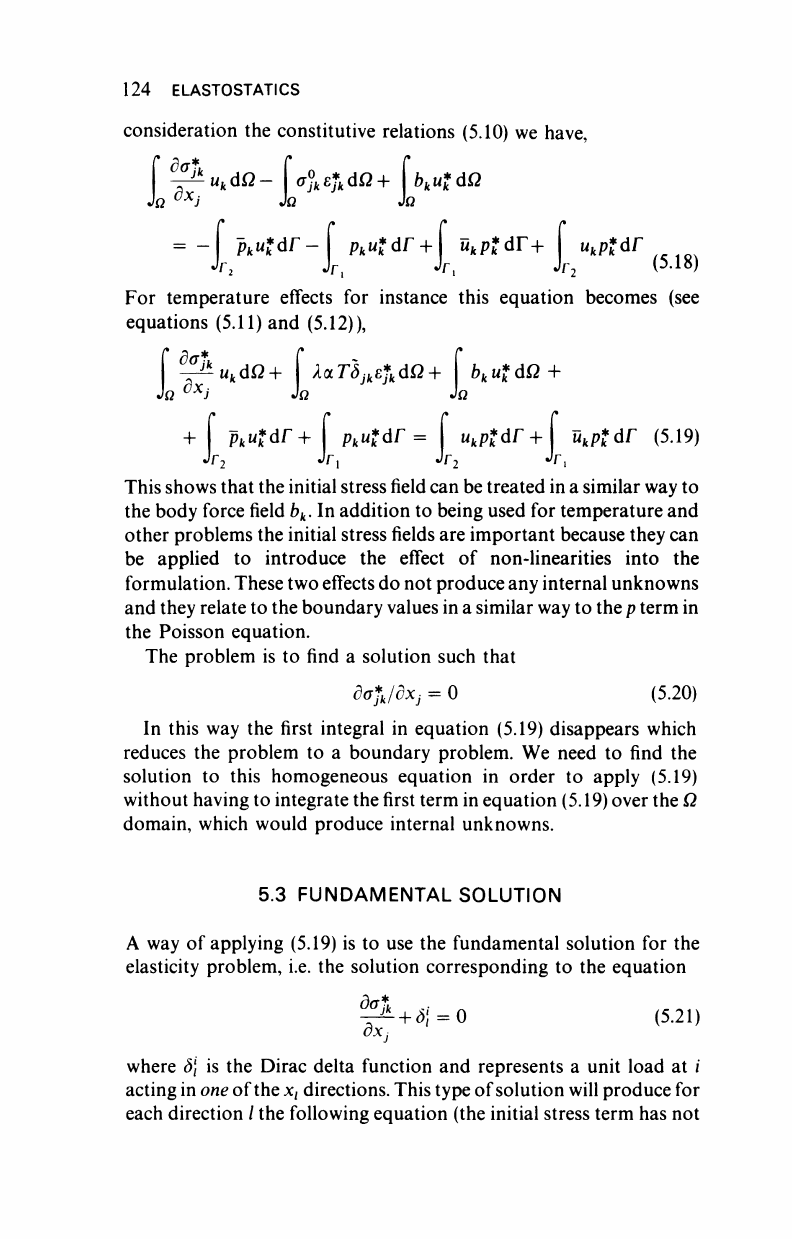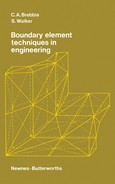
124 ELASTOSTATICS
consideration the constitutive relations (5.10) we have,
Ό
dx
J
=
-
Pic"*
J
r
2
h
ef
k
dQ + b
k
uidQ
P
k
utdr +
Jr. Jr.
Ptdr
(5.18)
For temperature effects for instance this equation becomes (see
equations (5.11) and (5.12)),
^u
fc
d0
4-
ü
8x
J
XoLTÖj
k
sf
k
dQ
+
b
k
ui άΩ +
Pk"k
df +
P
k
u*dr =
i
u
k
p*
k
dr+ u
k
ptdr (5.19)
This shows that the initial stress field can be treated in a similar way to
the body force field b
k
. In addition to being used for temperature and
other problems the initial stress fields are important because they can
be applied to introduce the effect of non-linearities into the
formulation. These two effects do not produce any internal unknowns
and they relate to the boundary values in a similar way to the p term in
the Poisson equation.
The problem is to find a solution such that
dafjdxj = 0
(5.20)
In this way the first integral in equation (5.19) disappears which
reduces the problem to a boundary problem. We need to find the
solution to this homogeneous equation in order to apply (5.19)
without having to integrate the first term in equation (5.19) over the Ω
domain, which would produce internal unknowns.
5.3 FUNDAMENTAL SOLUTION
A way of applying (5.19) is to use the fundamental solution for the
elasticity problem, i.e. the solution corresponding to the equation
daf
k
dx
J
(5.21)
where δ is the Dirac delta function and represents a unit load at i
acting in one of the x
t
directions. This type of solution will produce for
each direction / the following equation (the initial stress term has not

ELASTOSTATICS 125
been considered for simplicity):
'df
= f Mf dfl+ f P*"?dr+ f p
k
iijfdr (5.22)
Jß Jr
l
Jr
2
u
represents the displacement at i in the / direction (see Figure 5.2), wf
and p{ are the displacements and tractions respectively due to a unit
concentrated load at the point
i
acting in the
/
direction. If we consider
unit forces acting at i in the three directions, equation (5.22) can then
be written
"!+
u
h
pf
k
dr+
u
k
p?
h
dr
= ί MÄdQ+ I Pk*?kdr+ I
p
k
uf
k
ar
(5.23)
Jß Jr
l
Jr
2
where pf
k
and uf
k
represent the tractions and displacements in the k
direction due to unit forces acting in the direction /.
Figure
5.2 Notation, k is a point
on the
surface;
p
lk
are surface forces at k due to a
unit
load at i acting in the I direction (I = 1)
..................Content has been hidden....................
You can't read the all page of ebook, please click here login for view all page.
